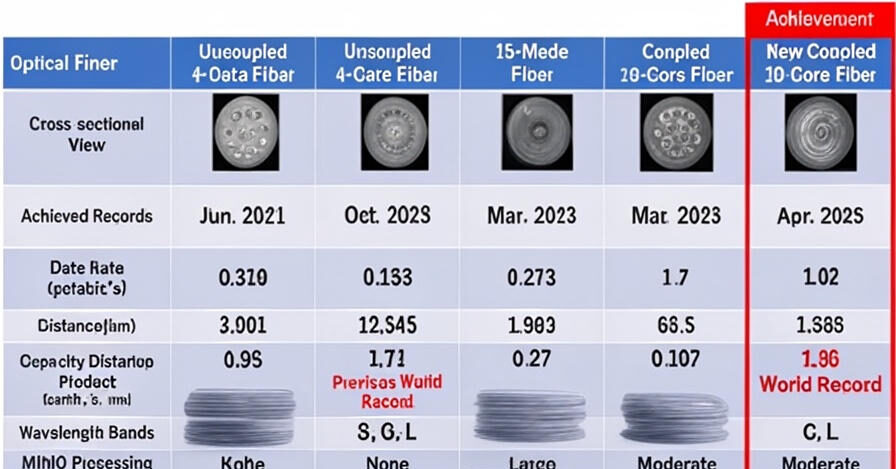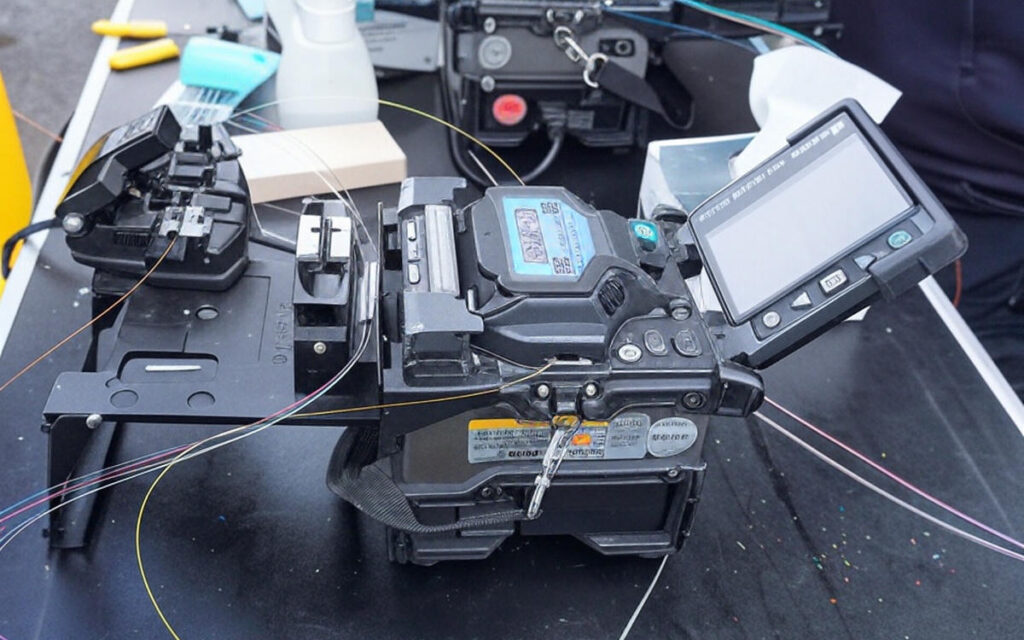
Japan continues to redefine the limits of internet technology. The National Institute of Information and Communications Technology (NICT), alongside Sumitomo Electric and European collaborators, has achieved a staggering 1.02 petabits per second (Pbps)—that’s 1,020,000,000 megabits per second—over a 1,808 km fiber-optic link. This record-breaking speed, announced this week, dwarfs the average global broadband connection, being approximately 4 million times faster than the U.S. To put it in perspective, at 1.02 Pbps, you could download the entire Netflix library in under a minute.
The feat was accomplished using a 19-core optical fiber, a revolutionary design that packs multiple data transmission pathways into a standard 0.125 mm cable, ensuring compatibility with existing infrastructure. By employing Dense Wavelength Division Multiplexing (DWDM) across 144 wavelength channels and advanced signal modulation, the team maximized data throughput. This follows NICT’s 2024 test, which hit 402 terabits per second (Tbps) over 50 km using O-to-U-band transmission and cutting-edge amplification tech. These advancements signal a future where data-heavy applications like 6G and IoT could operate seamlessly on a global scale.

Dr. Aiko Tanaka, a lead researcher at NICT’s Photonic Network Laboratory, noted, “This technology is a game-changer for high-capacity networks. It’s not just about speed—it’s about building a scalable backbone for the digital age.” While consumer access to petabit speeds is years away, the implications for cloud computing, transcontinental data transfers, and smart cities are profound.
Japan’s Consumer Internet: Already World-Class

Even without petabit speeds, Japan’s consumer broadband is a global leader. According to Ookla’s Q4 2023 data, So-net tops fixed broadband with a median download speed of 296.29 Mbps, upload speed of 219.53 Mbps, and latency of 9 ms. SpaceX Starlink leads in consistency, with 96.4% of tests meeting 25 Mbps down/3 Mbps up. SoftBank excels in gaming, boasting the lowest latency at 43 ms.
Regionally, Nagoya leads mobile speeds at 66.53 Mbps, while Saitama tops fixed broadband at 231.81 Mbps. With providers like NTT offering fiber plans up to 10 Gbps in urban areas, Japan’s infrastructure is already primed for next-gen applications like 8K streaming and real-time VR.
Beyond Speed: Emerging Tech Trends
1. 5G Standalone (SA) Networks Gain Traction
Japan’s mobile operators are rolling out 5G SA, which offers lower latency and higher reliability than non-standalone (NSA) networks. Rakuten Mobile’s 5G SA deployment has shown promise, with tests indicating up to 30% better latency for gaming and IoT applications. This could pave the way for autonomous vehicles and smart factories by 2030.
2. Quantum Networking on the Horizon
NICT is also exploring quantum communication to secure future networks. A 2024 test transmitted quantum-encrypted data over 100 km, a step toward unhackable internet infrastructure. While commercial quantum networks are a decade away, Japan’s early investments could set a global standard.
How to Test Your Internet in Japan

Want to see how your connection stacks up? Here’s how to test your speed:
Tools: Use FAST.com (ad-free, Netflix-backed) or Speedtest.net for download, upload, and latency metrics.
NTT Users: Try Broadband Speed Checker for external server tests, avoiding ISP-hosted biases.
Tips: Test via a wired connection (CAT5e or better) to eliminate Wi-Fi bottlenecks. Ensure your router supports gigabit speeds, and pause other downloads for accurate results.
Challenges and What’s Next
Petabit-class speeds face significant hurdles: high costs, specialized hardware, and the need for consumer devices to catch up. Most laptops and routers today max out at 1 Gbps, a tiny fraction of 1.02 Pbps. Commercial deployment will likely start with data centers and submarine cables before reaching households, possibly by the 2030s.
Providers are testing Wi-Fi 7, which could deliver 2-3 Gbps wirelessly, and 10 Gbps fiber plans are expanding in cities like Tokyo and Osaka.
Conclusion
Japan’s 1.02 Pbps breakthrough is a glimpse into a hyper-connected future, where data flows faster than we can imagine. Combined with advancements in 5G SA and quantum networking, Japan is cementing its role as a telecom pioneer. Whether you’re streaming in Nagoya or gaming in Saitama, tools like FAST.com can help you gauge your slice of this high-speed ecosystem. As NICT pushes the boundaries, the world watches—and waits—for the next leap.




